Introduction
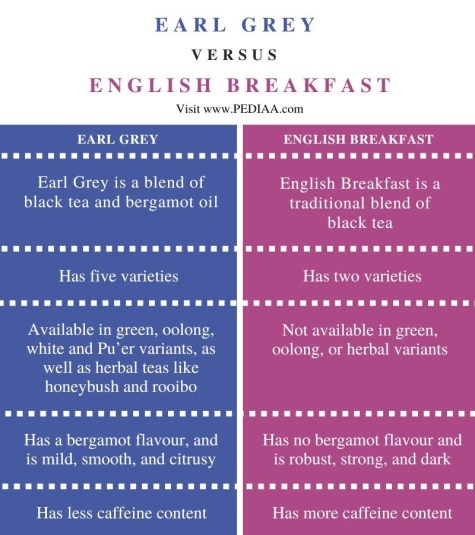
When it comes to choosing a morning brew, two popular options that often come to mind are Breakfast Tea and Earl Grey. While both are black teas, they have distinct flavors and characteristics that set them apart. In this blog post, we will delve into the differences between Breakfast Tea and Earl Grey, including their flavors, ingredients, caffeine content, health benefits, and brewing methods. By the end of this post, you will have a better understanding of these two teas and be able to make an informed choice for your morning cuppa. So let’s dive in!
What Is Breakfast Tea?
Breakfast tea is a type of black tea that is known for its robust flavor and strong character. It is often a blend of black teas from different regions, such as Assam, Ceylon, and Kenyan teas. The rich and malty taste of breakfast tea makes it a perfect choice for starting the day. It is typically enjoyed with milk and sugar, and it pairs well with a variety of breakfast foods. Breakfast tea is known for its energizing properties and is a popular choice for those seeking a strong and invigorating cup of tea in the morning.
What Is Earl Grey Tea?
Earl Grey tea is a type of black tea that is flavored with bergamot essential oil. The unique and distinctive flavor of bergamot gives Earl Grey tea a citrusy and floral taste, making it a popular choice among tea enthusiasts. The bergamot essential oil is extracted from the rind of bergamot oranges, which are primarily grown in Italy. Earl Grey tea was named after Charles Grey, the 2nd Earl Grey and former Prime Minister of the United Kingdom, who was rumored to have been given this special blend as a gift.
Flavors And Ingredients
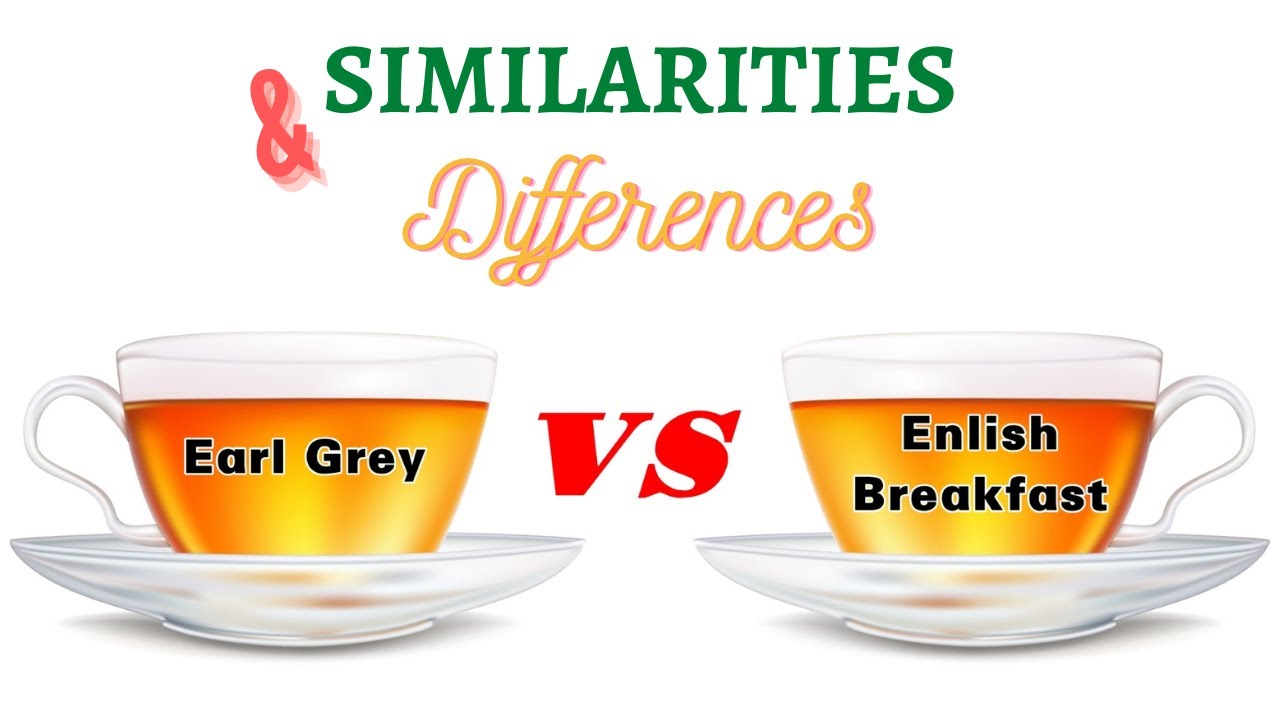
When it comes to flavors and ingredients, Breakfast Tea and Earl Grey Tea have distinctive tastes.
Breakfast Tea is typically a blend of different black teas, such as Assam, Ceylon, and Kenyan teas. It has a robust and full-bodied flavor with notes of malt and sometimes a hint of sweetness.
On the other hand, Earl Grey Tea is made by infusing black tea leaves with bergamot essential oil. This gives it a unique citrusy and floral taste, with a refreshing and aromatic aroma.
Overall, Breakfast Tea offers a bold and rich flavor, while Earl Grey Tea provides a more fragrant and citrusy experience.
Breakfast Tea Flavors And Ingredients
Breakfast Tea is typically a blend of different black teas, such as Assam, Ceylon, and Kenyan teas. This unique combination creates a robust and full-bodied flavor profile with notes of malt and sometimes a hint of sweetness. The blend of black teas gives Breakfast Tea its strong and hearty taste, making it a popular choice for those looking for an energizing and invigorating start to their day. With its bold flavors, Breakfast Tea is often enjoyed with milk and sugar, but it can also be enjoyed on its own for those who prefer a stronger and more intense cup of tea.
Earl Grey Flavors And Ingredients
Earl Grey tea is known for its unique and distinct flavors. It is traditionally made using a black tea base, usually from China or India, and is flavored with oil extracted from the rind of bergamot oranges. The bergamot oil gives Earl Grey its signature citrusy and floral notes, creating a refreshing and aromatic cup of tea. Some variations of Earl Grey may also include additional ingredients such as lavender or lemon peel to enhance the flavor profile. The combination of the black tea base and bergamot oil results in a well-balanced and sophisticated tea experience.
Caffeine Content
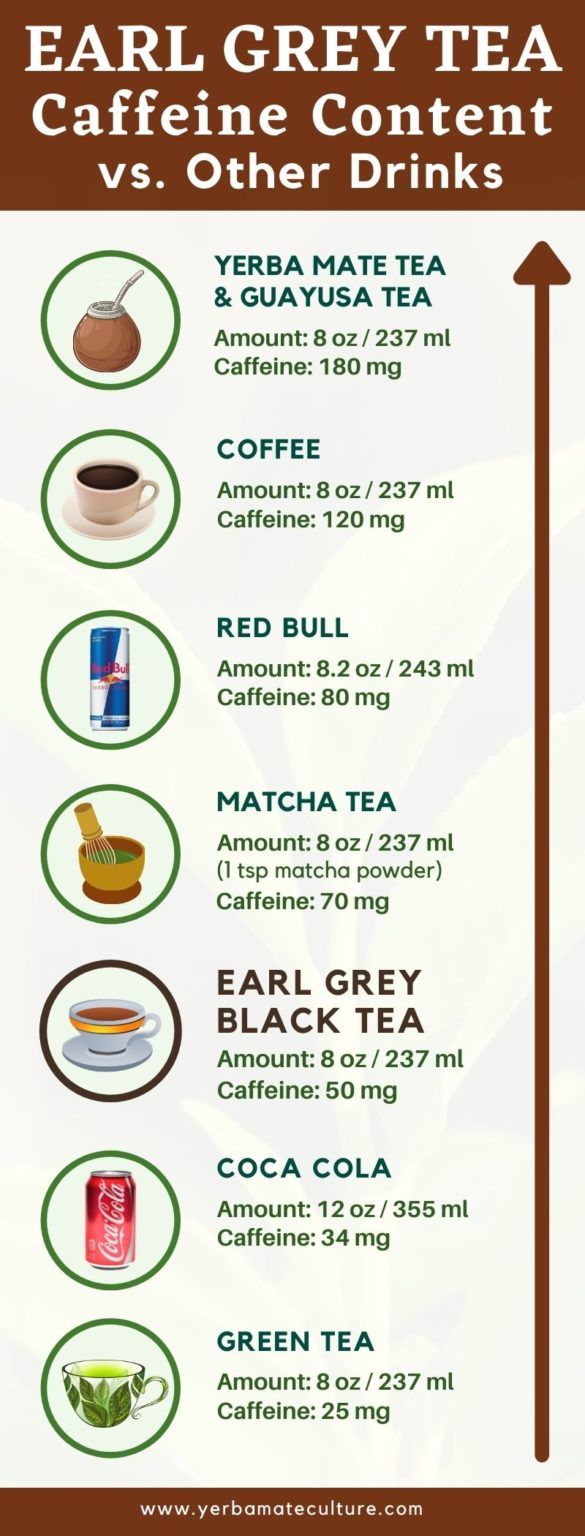
When it comes to caffeine content, there is a slight difference between Breakfast Tea and Earl Grey. English Breakfast tea is likely to have a higher caffeine content compared to Earl Grey. This is because English Breakfast is commonly made using a blend of black teas from various regions, which tend to have higher caffeine levels. On the other hand, Earl Grey tea, especially those blended with other ingredients such as flowers, may have slightly lower caffeine levels. If you’re sensitive to caffeine or prefer a lower caffeine option, Earl Grey could be the better choice for you.
Breakfast Tea Caffeine Content
Breakfast tea is known for its higher caffeine content compared to other types of tea. Typically made from a blend of black teas, it contains an average of 40mg to 70mg of caffeine per 8 fl oz cup. However, it’s important to note that the exact caffeine content can vary depending on the specific blend and brewing method. Some factors that can affect the caffeine levels include the type of black tea used, the brewing time, and the water temperature. Individuals who are sensitive to caffeine may want to choose a decaffeinated version or limit their consumption.
Earl Grey Caffeine Content
Earl Grey tea typically contains a moderate amount of caffeine compared to other types of tea. On average, an 8 fl oz cup of Earl Grey tea contains around 20mg to 45mg of caffeine. The exact caffeine content can vary depending on factors such as the type of black tea used as the base and the brewing method. Earl Grey tea is made by infusing black tea leaves with the essence of bergamot, which gives it its distinctive flavor. Individuals who are more sensitive to caffeine may opt for decaffeinated versions of Earl Grey tea.
Health Benefits And Effects
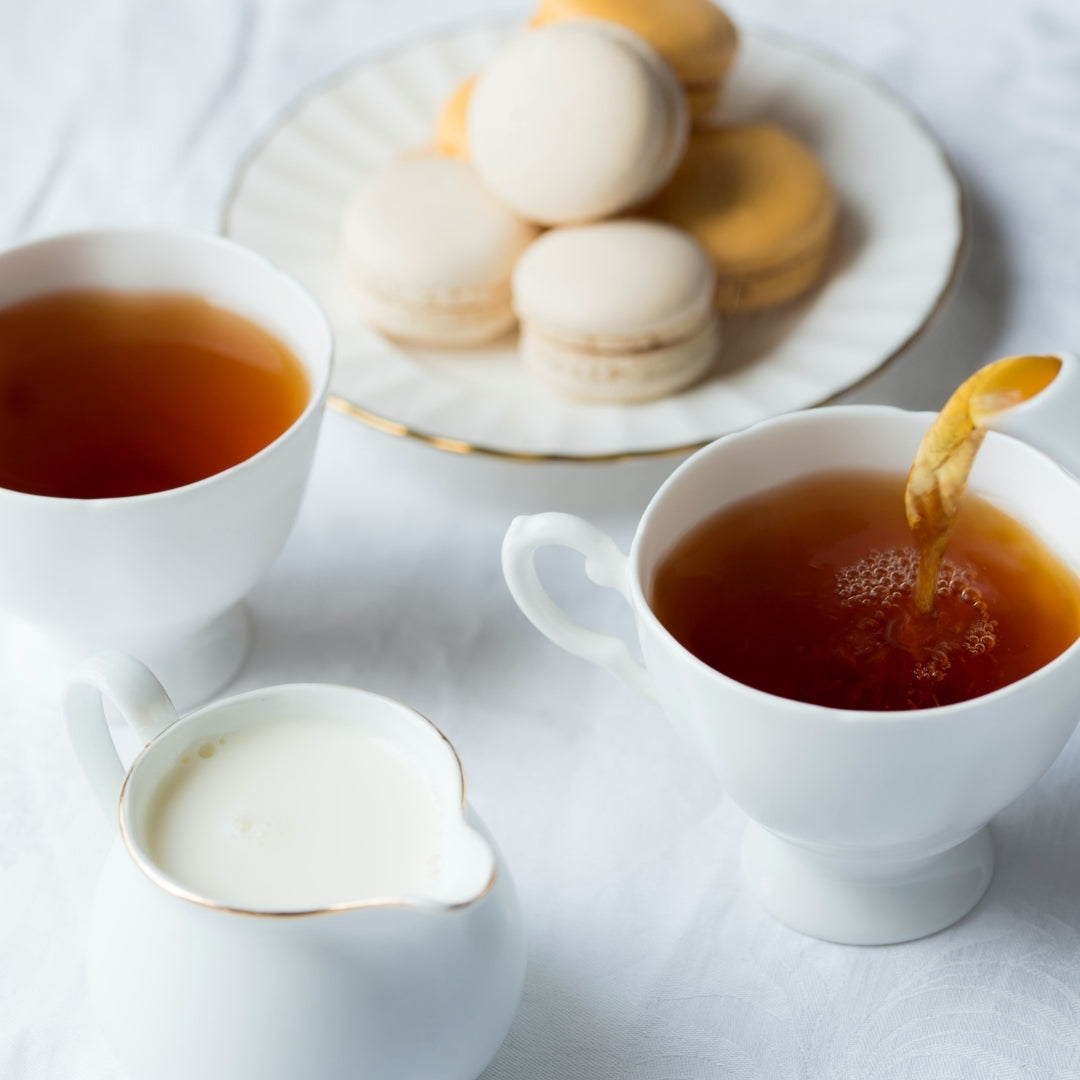
Breakfast Tea and Earl Grey Tea offer a range of health benefits and effects.
- Breakfast Tea is known for its potential benefits toward heart health due to its high levels of antioxidants and polyphenols. It may also help elevate energy levels and improve mental focus.
- Earl Grey Tea, on the other hand, contains bergamot, which is believed to have calming and mood-enhancing properties. It may also support digestive health and help reduce inflammation.
Both teas contribute to overall hydration and can be enjoyed as part of a balanced diet. Remember, individual responses to tea may vary, so it’s best to listen to your body and consult with a healthcare professional if you have any specific concerns.
Health Benefits Of Breakfast Tea
Breakfast tea offers several health benefits. Its high levels of antioxidants and polyphenols contribute to its potential benefits for heart health. The antioxidants in breakfast tea help combat oxidative stress and reduce the risk of chronic diseases. It may also help improve mental focus and elevate energy levels, making it a great choice to start your day. Additionally, breakfast tea contributes to overall hydration and can be a part of a balanced diet. Remember, individual responses to tea may vary, so it’s always best to listen to your body and consult with a healthcare professional if you have any specific concerns.+
Health Benefits Of Earl Grey Tea
Earl Grey tea offers several health benefits. It contains antioxidants that help fight against free radicals and reduce the risk of chronic diseases. The presence of bergamot oil in Earl Grey tea may also have mood-enhancing and stress-relieving effects. Additionally, the tea may help improve digestion, promote weight loss, and support a healthy heart. The caffeine content in Earl Grey tea can provide a natural energy boost and increase focus and concentration. However, it’s important to note that individual responses to tea may vary. It’s always best to listen to your body and consult with a healthcare professional for any specific concerns.
Brewing Methods And Serving Suggestions

To brew Breakfast Tea, start by boiling water and letting it cool for a minute before pouring it over tea leaves in a teapot. Steep for 3-5 minutes, and then strain into cups. For an authentic experience, serve with milk and sugar.
To brew Earl Grey Tea, follow the same steps but without the milk. You can also enhance the flavor with a slice of lemon or a dash of honey.
Both teas can be enjoyed hot or iced. For iced tea, brew it as usual and let it cool before pouring it over ice cubes. Serve with a slice of lemon or a sprig of mint for a refreshing twist.
Brewing Methods For Breakfast Tea
To brew Breakfast Tea, start by boiling water and letting it cool for a minute before pouring it over tea leaves in a teapot. Steep for 3-5 minutes, and then strain into cups. For an authentic experience, serve with milk and sugar. If you prefer a stronger brew, you can steep the tea for a longer time. Experiment with different ratios of tea leaves to water to find your preferred strength. Remember to adjust the brewing time and temperature based on personal taste preferences.
Brewing Methods For Earl Grey Tea
To brew Earl Grey Tea, start by bringing water to a boil and then letting it cool for a minute. Place tea leaves or a tea bag in a teapot or cup. Pour the hot water over the tea and let it steep for about 3-5 minutes. The steeping time can be adjusted to personal taste preferences. Once the tea has steeped, remove the leaves or tea bag and strain it into cups. Some people enjoy Earl Grey tea with a slice of lemon or a dash of honey for added flavor. Enjoy!
Conclusion
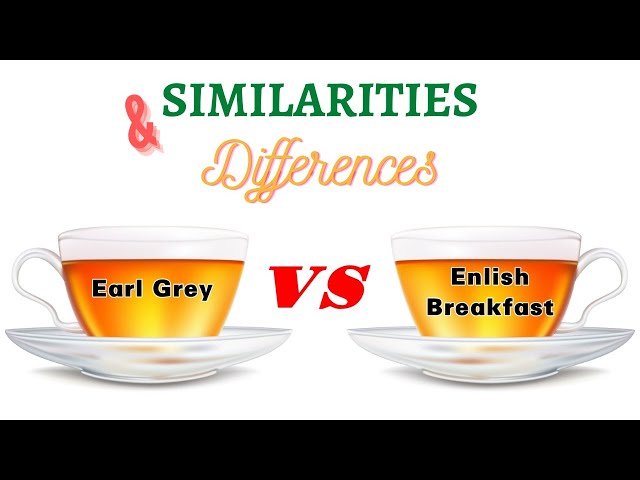
In conclusion, the battle between Breakfast Tea and Earl Grey Tea ultimately comes down to personal preference. Both teas offer unique flavors and aromas that cater to different taste buds. Breakfast Tea is known for its robust and strong flavor, making it a great choice for a morning pick-me-up. On the other hand, Earl Grey Tea has a milder and more citrusy taste, perfect for those looking for a smoother and refreshing experience. Whether you prefer the boldness of English Breakfast or the subtle notes of Earl Grey, both teas provide a delightful way to start your day.
Comparison Between Breakfast Tea And Earl Grey Tea
Breakfast Tea and Earl Grey Tea are both popular choices for morning beverages, but they have distinct differences.
- Breakfast Tea is known for its robust and full-bodied flavor, while Earl Grey has a milder taste with hints of citrus.
- Breakfast Tea typically contains a blend of black teas, while Earl Grey is made with black tea flavored with bergamot oil.
- In terms of caffeine content, Breakfast Tea generally has higher levels compared to Earl Grey.
- Both teas offer various health benefits, such as antioxidant properties and potential cardiovascular benefits.
Ultimately, the choice between Breakfast Tea and Earl Grey comes down to personal preference and desired flavor profile.
Which One Should You Choose?
When deciding between Breakfast Tea and Earl Grey Tea, the choice ultimately comes down to personal preference and desired flavor profile. If you prefer a robust and full-bodied flavor, Breakfast Tea is the way to go. On the other hand, if you prefer a milder taste with hints of citrus, Earl Grey is the better choice. Consider the caffeine content as well, with Breakfast Tea generally having higher levels compared to Earl Grey. Both teas offer various health benefits, so choose the one that suits your taste preferences and health goals.
Frequently Asked Questions about Breakfast Tea vs Earl Grey
1. What is Breakfast Tea?
Breakfast tea is a robust black tea blend that is typically enjoyed in the morning. It is known for its strong and invigorating taste, which makes it a perfect choice to kick-start your day. This blend is made with a combination of different black teas, such as Assam, Ceylon, and Kenyan teas, to create a full-bodied and hearty brew.
2. What is Earl Grey Tea?
Earl Grey tea is a black tea that is flavored with bergamot oil, which is derived from the rind of bergamot oranges. This aromatic citrus fruit lends a distinctive and refreshing flavor to the tea. Earl Grey has a slightly more delicate and floral taste compared to breakfast tea, and it is often enjoyed in the afternoon or as a refined tea option.
3. Are there any similarities between Breakfast Tea and Earl Grey?
While breakfast tea and Earl Grey are both black teas, they differ significantly in terms of flavor profiles. They are prepared using different ingredients and brewing techniques, resulting in distinct tastes and aromas.
4. What is the ideal time to enjoy Breakfast Tea?
Breakfast tea is traditionally consumed in the morning. Its strong and bold character makes it an excellent choice for those who prefer a robust cup of tea to wake up their senses and energize their day.
5. When is the best time to indulge in Earl Grey Tea?
Earl Grey tea is commonly enjoyed in the afternoon or as a refreshing break from everyday activities. Its delicate and fragrant notes make it a perfect choice for those seeking a floral and citrusy twist to their tea-drinking experience.
6. Can Breakfast Tea and Earl Grey be enjoyed with milk?
While it is common to add milk or other accompaniments to breakfast tea, Earl Grey is traditionally served without milk. Feel free to experiment with both teas to find the serving method that best suits your taste and preferences.
7. Are there any health benefits associated with these teas?
Both breakfast tea and Earl Grey offer potential health benefits due to their antioxidant properties. Black tea, in general, may boost heart health, aid digestion, and provide a gentle energy boost. However, individual health benefits may vary, and it is important to consult a healthcare professional for personalized advice.
8. Can Breakfast Tea or Earl Grey be enjoyed iced?
Certainly! Both breakfast tea and Earl Grey can be enjoyed over ice for a refreshing summer beverage. Add some lemon or a touch of sweetener to enhance the flavors and elevate your iced tea experience.
In summary, breakfast tea and Earl Grey differ in terms of their flavor profiles, ingredients, and ideal consumption times. While breakfast tea is a bold and robust blend, Earl Grey is a fragrant and delicate tea infused with bergamot oil. Whether you’re looking for a strong morning cup or a soothing afternoon pick-me-up, these teas offer a delightful range of flavors to suit various preferences.

Everyone has had a recipe that looked great on paper but ended up burning once you got into the kitchen. Obviously, a recipe isn’t just about what ingredients go into it. Knowing how you prepare a dish has a strong impact on how it finally tastes.